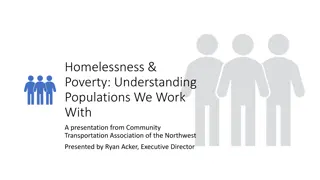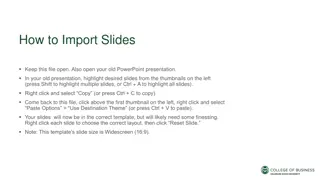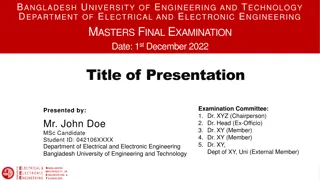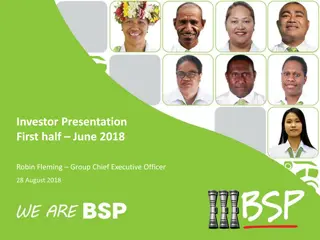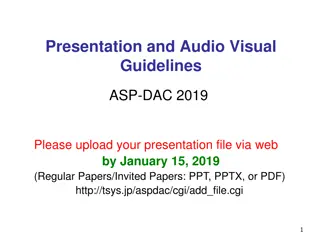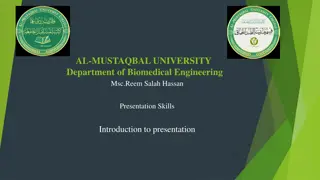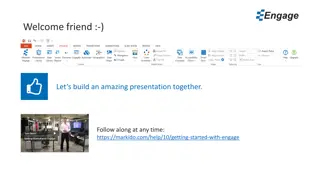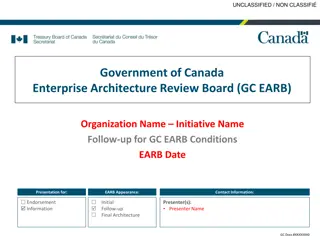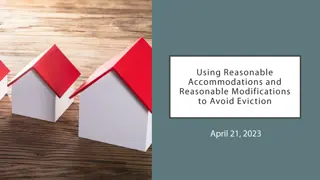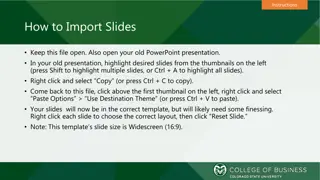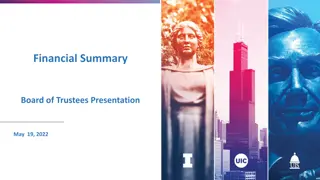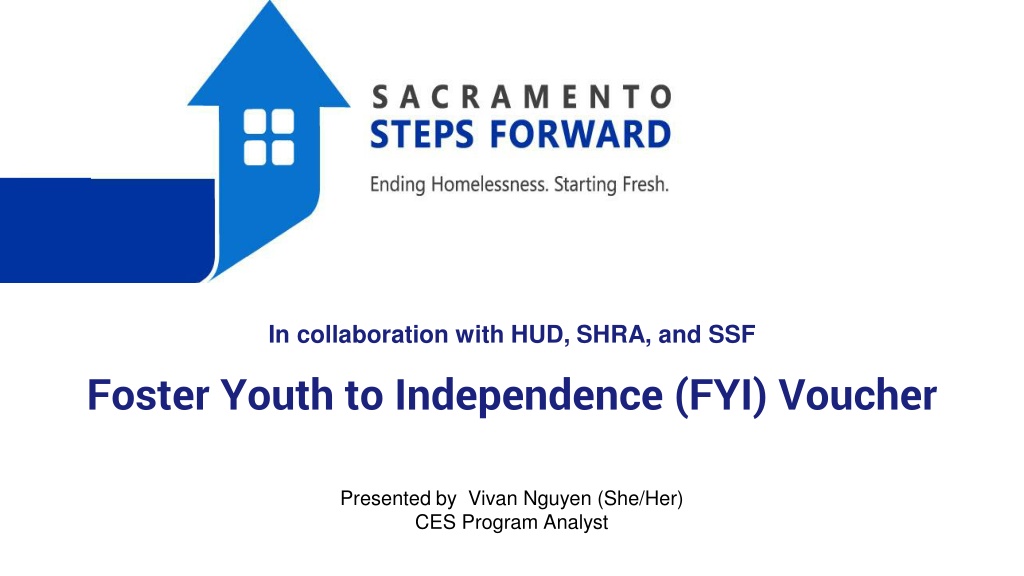
Sacramento FYI Voucher Program Eligibility and Overview
Learn about the Sacramento FYI Voucher program in collaboration with HUD, SHRA, and SSF to provide housing assistance for transitional age youth who have exited foster care. The program overview, eligibility requirements, key terms, and helpful resources are covered in this comprehensive guide.
Download Presentation

Please find below an Image/Link to download the presentation.
The content on the website is provided AS IS for your information and personal use only. It may not be sold, licensed, or shared on other websites without obtaining consent from the author. If you encounter any issues during the download, it is possible that the publisher has removed the file from their server.
You are allowed to download the files provided on this website for personal or commercial use, subject to the condition that they are used lawfully. All files are the property of their respective owners.
The content on the website is provided AS IS for your information and personal use only. It may not be sold, licensed, or shared on other websites without obtaining consent from the author.
E N D
Presentation Transcript
In collaboration with HUD, SHRA, and SSF Foster Youth to Independence (FYI) Voucher Presented by Vivan Nguyen (She/Her) CES Program Analyst
Table of Contents Introductions slide 3 Overview slide 4 Eligibility Requirements slide 5 AMI income limits ..slide 6 FYI Voucher Referral Process Flow Chart ..slide 7 Program Quirks and Expectations ..slide 8 Document Requirements and Readiness ...slide 9-17 Helpful Resources slide 18
Introduction: Key Roles and Terms Sacramento Steps Forward (SSF): Oversees referrals into FYI Housing Choice Voucher(HCV) by utilizing Coordinated Entry Public Child Welfare Agency (PCWA): Verifies potential FYI candidate s eligibility Sacramento Housing and Redevelopment Agency (SHRA): Oversees the FYI application process and issuing of the voucher. Service Providers: Case workers, outreach workers, advocates, etc. that work with FYI candidates on their housing journey and outcome.
Overview Housing and Urban Development (HUD) has provided funding to SHRA in partnership with Sacramento County s PCWA to allocate Housing Choice Vouchers to serve transitional age youth(TAY) under the Family Unification Program (FUP). This housing program is called Foster Youth to Independence (FYI) Voucher. FYI Vouchers will provide housing assistance for up to 36 months (3 years)* to youth or pregnant or parenting youth, who were formerly in, or close to exiting, foster care. *Youth who meet certain requirements under Fostering Stable Housing Opportunities (FSHO) may have their voucher extended for an additional 24 months (2 years).
Initial Eligibility Requirements Must be between the age of 18-24 years old (TAY) Cannot have reached their 25th birthday before LEASE UP! Must have exited the foster care system AFTER the age of 16 AND Homeless(Category 1 through 4) or at risk of becoming homeless Must have income below 50% AMI, Unless at risk of homelessness (must be below 30% AMI to be considered at risk of homelessness according to HUD guidelines) Calculate candidate s income by referencing this income calculator: Income Limit Determinator Please note: At least one member of the household (HH) must have legal status to be eligible for rental assistance though the FYI voucher. Assistance is determined by number of eligible HH members. Tenant s portion/contribution of rent CANNOT exceed 40% of total HH income.
2023 HUD Annual Median Income Limits* Household Size 30% AMI 1 person $22,550 2 persons $25,750 3 persons $28,950 4 persons $32,150 5 persons $34,750 6 persons $37,300 7 Persons $39,900 8 Persons $42,450 50% AMI $37,550 $42,900 $48,250 $53,600 $57,900 $62,200 $66,500 $70,800 HUD Annual Median Income (AMI) Limits * Effective June 15, 2023
Program quirks/ Expectations AT THIS TIME, FYI vouchers currently do not have ANY housing navigation or supportive services attached. Just rental assistance. The referring Service Providers(SP) must work with candidates on application and all housing navigation services until lease up. SSF is currently working on contracting a service agency to provide support services for future FYI voucher holders. This may take time, so referring SP must provide support until then. Since this program is time limited (maximum 36 months), it is recommended that SP refer clients who will be relatively self sufficient and stabilized within that time frame. FYI candidate must be leased up/ signed a lease before their 25th birthday or they will become disqualified for FYI voucher assistance. FYI candidate can age out (turn 25+) once they are leased up and maintain the FYI voucher assistance until program time ends.
At Risk of Homelessness Definition (HUD) At Risk of Homelessness means the individual or family who: (i) Has an annual income below 30 percent of median family income for the area, as determined by HUD. (ii) Does not have sufficient resources or support networks, e.g., family, friends, faith-based or other social networks, immediately available to prevent them from moving to an emergency shelter or another place described in paragraph (1) of the Homeless definition at 24 CFR 576.2; AND ..
At Risk of Homelessness Definition (HUD) continued AND Meets ONE of the following conditions: (A) Has moved because of economic reasons two or more times during the 60 days immediately preceding the application for homelessness prevention assistance; (B) Is living in the home of another because of economic hardship; (C) Has been notified in writing that their right to occupy their current housing or living situation will be terminated within 21 days of the date of application for assistance; (D) Lives in a hotel or motel and the cost of the hotel or motel stay is not paid by charitable organizations or by federal, State, or local government programs for low-income individuals; (E) Lives in a single-room occupancy or efficiency apartment unit in which there reside more than two persons, or lives in a larger housing unit in which there reside more than 1.5 people per room, as defined by the U.S. Census Bureau; (F) Is exiting a publicly funded institution, or system of care (such as a health-care facility, a mental health facility, foster care or other youth facility, or correction program or institution); or (G) Otherwise lives in housing that has characteristics associated with instability and an increased risk of homelessness, as identified in the recipient's approved consolidated plan;
At Risk of Homelessness Certification Form Link to form: At Risk of Homelessness Certification Must be filled out completely and signed BOTH boxes must be checked off At least 1 box must be checked off
Category 1: Literally Homeless Definition: Shelter including emergency shelter, transitional housing, or hotel or motel paid by government or charity Street or other place not meant for human habitation (ex. car, garage, park, abandoned building) An institution (ex. jail, hospital, juvenile detention) that the youth is exiting and where youth was resident for 90 days or less AND the youth resided in emergency shelter or place not meant for human habitation immediately prior to entering that institution Type of documentation required: Homeless Certification (expires after 90 days)
Homeless Certification Homeless Certification Expires after 90 days Please fill out everything! Check box and type of verification attached Provider/ Case Manager s information and signature
Category 2: Imminent Risk of Homelessness Definition: In own housing, but being evicted within 14 days. Staying at a hotel or motel paid for by the youth, family or friends where the youth cannot stay for more than 14 days (often due to lack of ability to continue paying). Staying with family or friends and being asked to leave within 14 days. Type of documentation required: (Choose 1) Notice of eviction or equivalent legal document, OR Proof of inability to continue to pay for hotel or motel, OR Statement by youth that they cannot continue to stay at the place they have been AND written or oral verification from owner or renter of housing obtained by intake worker OR documentation of intake worker s attempts to verify information Additionally, the youth must have no safe alternative housing, resources or support networks to maintain or obtain permanent housing.
Category 3: Homeless Under other Federal Statutes Type of documentation required: Definition: Youth who do not qualify as homeless under the other 3 Categories but who: Certification of homeless status by the non- profit, or state or local government entity, responsible for administering homeless assistance under other federal statutes, AND Are homeless under other federal statutes including the Runaway & Homeless Youth Act Have not had their own place with a lease, ownership interest or occupancy agreement in the last 60 days Have moved two or more times in the last 60 days Can be expected to have continued housing instability because of a disability, substance use addiction, history of domestic violence or child abuse, or two or more barriers to employment Certification by the youth that they have not had a lease or other agreement for housing in the last 60 days with written documentation (e.g., from an outreach worker or homeless liaison) OR documentation of intake worker s attempts to verify information, AND Certification by the youth that they have had two or more moves in the last 60 days with written documentation OR documentation of intake worker s attempts to verify information, AND Documentation of special needs (e.g., copy of SSI check, third party verification, direct observation) or at least two barriers to employment
Category 4: Fleeing domestic violence, human trafficking, sexual violence, dating violence, and/or stalking Definition: Youth fleeing or attempting to flee their housing or the place they are staying because of domestic violence, dating violence, sexual assault, stalking, or other dangerous or life-threatening conditions related to violence that has taken place in the house or has made them afraid to return to the house, which may include but not limited to: Type of documentation required: Homeless Certification (expires after 90 days) Check off the 4th box AND Trafficking Physical abuse Violence (or perceived threat of violence) because of the youth s sexual orientation Self Certification of Category 4 Additionally, the youth must have no safe, alternative housing, resources or support networks to maintain or obtain permanent housing.
Self-Certification of Category 4 Homelessness (Fleeing DV, HT, SA, etc) Link to Self Certification of Category 4 Do not upload to HMIS unless client authorize it. If client does not authorize it, you will need to send the form to the referral specialist in an encrypted format. HMIS code instead of name is accepted. All boxed must be checked off Provider/ Case Manager s information and signature
Helpful Resources Determining homeless status in youth guide SHRA Income Limit Determinator HUD FYI Q&A
Work Cited https://www.hudexchange.info/resource/4783/determining-homeless-status-of- youth/ https://www.hud.gov/sites/dfiles/PIH/documents/FYI_FAQs_Version_VMS_Rep orting_&_Amended_Notice_Update_9.29.2021_%20(002).pdf https://www.hud.gov/sites/dfiles/SPM/documents/FR-6600-N- 41_Foster_Youth_to_Independence_FYI_Competitive_NOFOv2.pdf






